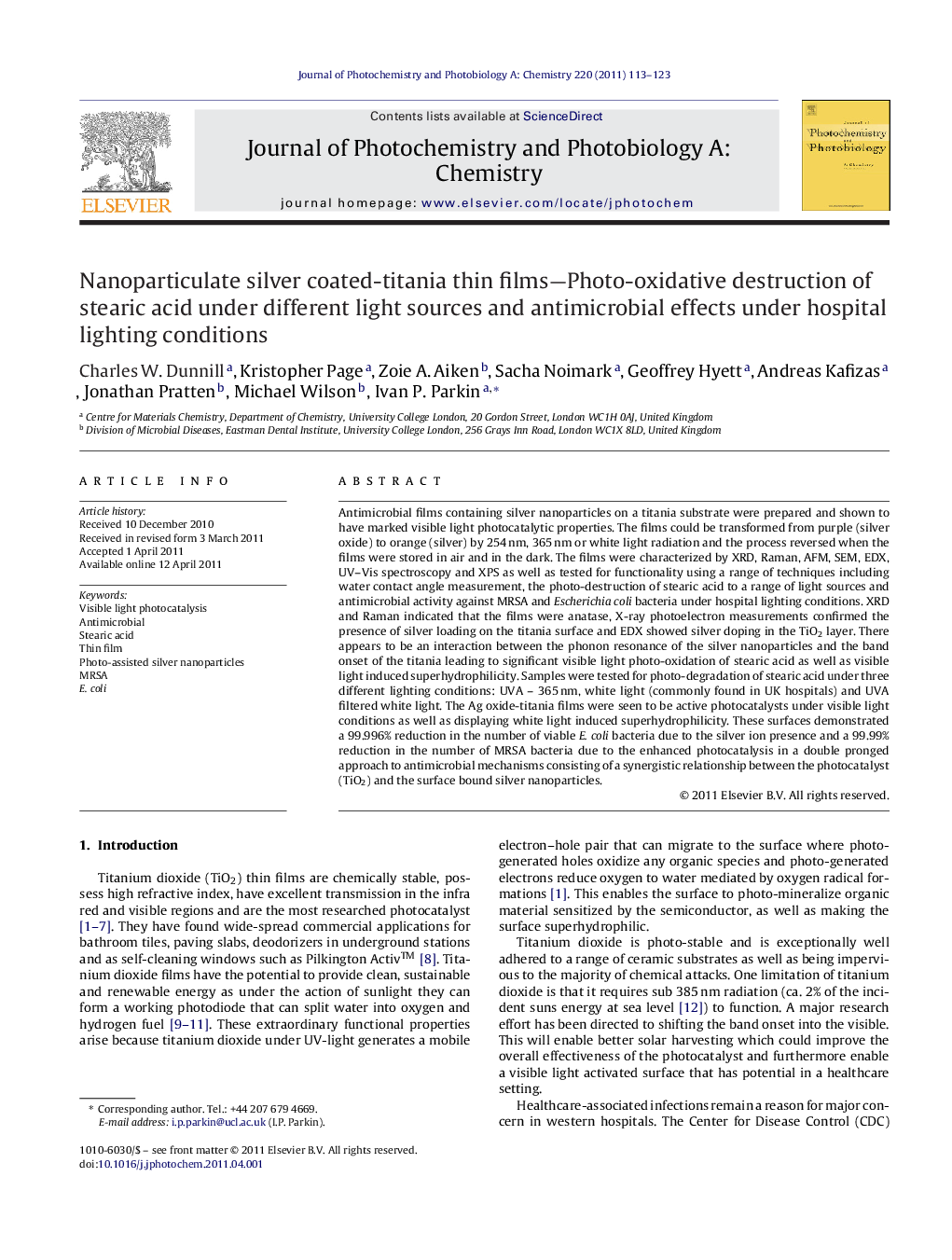| کد مقاله | کد نشریه | سال انتشار | مقاله انگلیسی | نسخه تمام متن |
|---|---|---|---|---|
| 28762 | 44090 | 2011 | 11 صفحه PDF | دانلود رایگان |

Antimicrobial films containing silver nanoparticles on a titania substrate were prepared and shown to have marked visible light photocatalytic properties. The films could be transformed from purple (silver oxide) to orange (silver) by 254 nm, 365 nm or white light radiation and the process reversed when the films were stored in air and in the dark. The films were characterized by XRD, Raman, AFM, SEM, EDX, UV–Vis spectroscopy and XPS as well as tested for functionality using a range of techniques including water contact angle measurement, the photo-destruction of stearic acid to a range of light sources and antimicrobial activity against MRSA and Escherichia coli bacteria under hospital lighting conditions. XRD and Raman indicated that the films were anatase, X-ray photoelectron measurements confirmed the presence of silver loading on the titania surface and EDX showed silver doping in the TiO2 layer. There appears to be an interaction between the phonon resonance of the silver nanoparticles and the band onset of the titania leading to significant visible light photo-oxidation of stearic acid as well as visible light induced superhydrophilicity. Samples were tested for photo-degradation of stearic acid under three different lighting conditions: UVA – 365 nm, white light (commonly found in UK hospitals) and UVA filtered white light. The Ag oxide-titania films were seen to be active photocatalysts under visible light conditions as well as displaying white light induced superhydrophilicity. These surfaces demonstrated a 99.996% reduction in the number of viable E. coli bacteria due to the silver ion presence and a 99.99% reduction in the number of MRSA bacteria due to the enhanced photocatalysis in a double pronged approach to antimicrobial mechanisms consisting of a synergistic relationship between the photocatalyst (TiO2) and the surface bound silver nanoparticles.
Photograph showing the difference in colour between sample Ag-TiO2 (purple on the left) and Ag-TiO2-UV (orange on the right). Note that the microscope slides contained a 1 cm well cavity ca. 1 mm deep to make them suitable for microbiology testing.Figure optionsDownload as PowerPoint slideHighlights
► Antimicrobial films containing silver nanoparticles on a titania substrate were prepared and shown to have marked visible light photocatalytic properties.
► The films could be transformed from purple (silver oxide) to orange (silver) by 254 nm, 365 nm or white light radiation and the process reversed when the films were stored in air and in the dark.
► Duel action antimicrobial properties work from a combination of silver ion release and photoactivated properties.
Journal: Journal of Photochemistry and Photobiology A: Chemistry - Volume 220, Issues 2–3, 20 May 2011, Pages 113–123